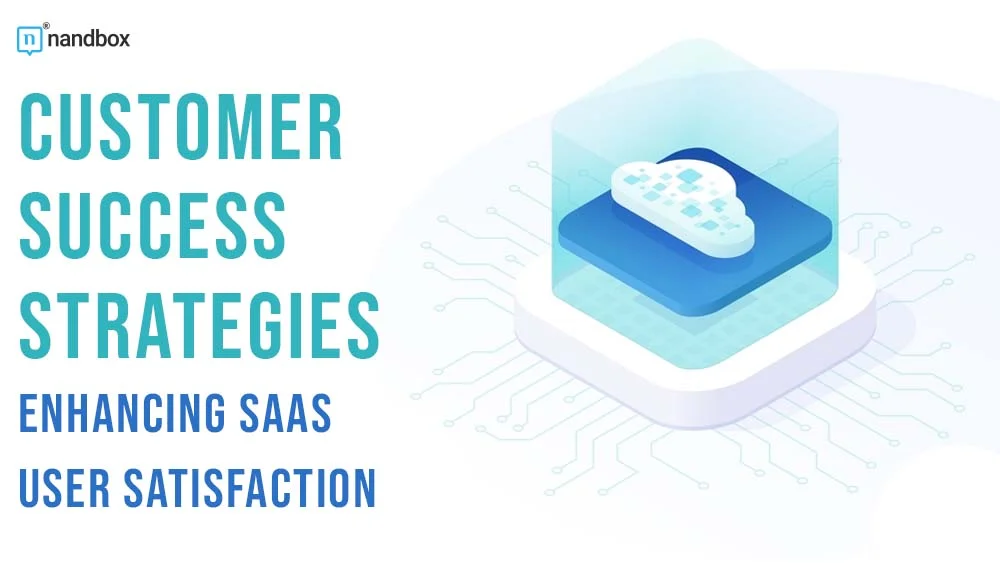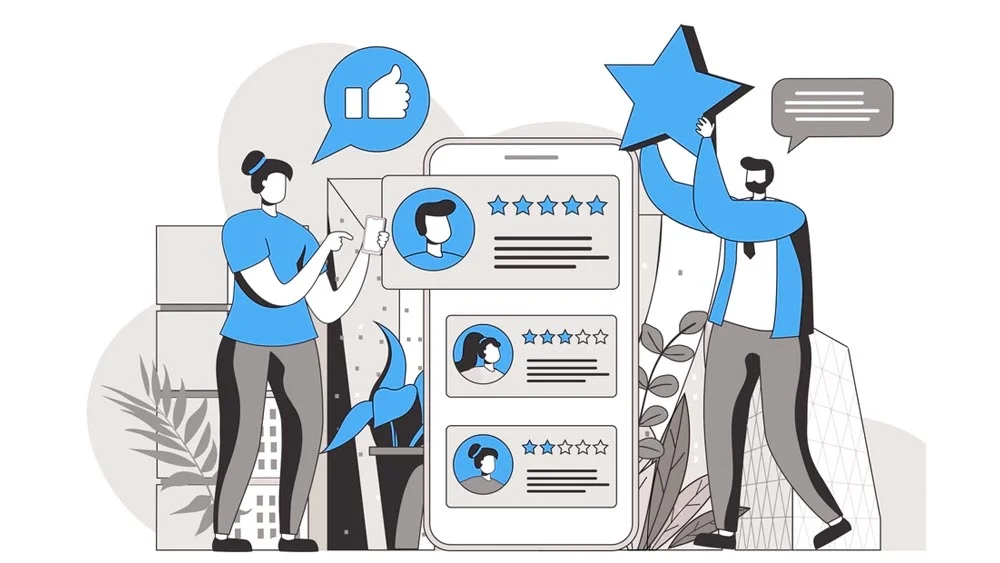Customer success is an important aspect of the Software as a Service (SaaS) industry. As the competition in this sector intensifies, ensuring that customers achieve their desired outcomes with your product can be a significant differentiator. Effective customer success strategies not only help in retaining clients but also in transforming them into loyal advocates for your brand. This article delves into various strategies that SaaS companies can implement to enhance customer success, thereby driving growth and sustainability.
Understanding Customer Success
Customer success in the SaaS context refers to the process of ensuring that customers derive maximum value from the software, leading to higher satisfaction, retention, and advocacy. This concept transcends traditional customer support by adopting a proactive approach that prioritizes helping customers achieve their goals with the product.
Traditional customer support is reactive; it responds to issues as they arise, focusing on troubleshooting and problem resolution. While this is essential, it only addresses the immediate needs of the customer without necessarily contributing to their long-term success with the product. In contrast, customer success is about anticipating customer needs and challenges, providing guidance and resources to prevent problems before they occur, and ensuring that the software is being utilized to its fullest potential.
A key aspect of customer success is the onboarding process, where new users are introduced to the software and its features. Effective onboarding involves personalized training sessions, interactive tutorials, and continuous support to ensure that customers are comfortable and confident in using the product. This initial phase is critical, as it sets the foundation for the customer’s overall experience and determines their long-term engagement with the software.
Key Elements of Customer Success
Before diving into specific strategies, it is essential to understand the key elements that form the foundation of a robust customer success program:
Customer Onboarding:
Customer onboarding is the process of welcoming and educating new users about the software. This phase is critical, as it sets the foundation for the customer’s entire journey and can significantly influence their long-term engagement and satisfaction. Effective onboarding starts with a personalized onboarding email, making the new user feel valued and providing an overview of what to expect during the onboarding process. It also involves interactive tutorials, video walkthroughs, and step-by-step guides to help users understand the core functionalities of the software. These resources should be easy to follow and accessible at any time. Providing onboarding checklists guides users through essential setup steps, ensuring they don’t miss any critical tasks, such as setting up their account, configuring settings, and familiarizing themselves with the user interface.
Customer Engagement:
Customer engagement involves continuous interaction with customers to keep them engaged with the product and ensure they are deriving value from it. Maintaining high levels of engagement is essential for retention and long-term success. Regular check-ins with customers, either through phone calls, video meetings, or in-app messages, help understand their experiences, gather feedback, and offer assistance. Sharing valuable content such as blog posts, case studies, webinars, and industry news can help customers get the most out of the software and stay informed about relevant trends. Creating a community platform where customers can interact, share experiences, and learn from each other, such as forums, social media groups, or user events, fosters a sense of belonging and engagement.
Customer Support
“Providing timely assistance and resolving issues as they arise is a cornerstone of customer success. Efficient customer support ensures that users can overcome any obstacles and continue to use the software productively. Offering support through various channels such as email, phone, live chat, social media, and in-app messaging caters to different customer preferences. Ensuring round-the-clock support for customers in different time zones and with critical needs can be achieved through a combination of live agents and automated support tools. Maintaining an extensive knowledge base with FAQs, troubleshooting guides, how-to articles, and video tutorials accessible at any time helps customers self-serve.” Says Jay Barton, CEO of ASRV
Customer Feedback:
Regularly collecting and acting on customer feedback is crucial for continuous improvement of the product and service. Feedback helps identify areas of improvement, understand customer needs, and enhance overall satisfaction. Conducting regular surveys and polls gathers customer feedback on various aspects of the product and service, such as satisfaction, feature requests, and usability. Using Net Promoter Score (NPS) surveys measures customer loyalty and identifies promoters and detractors, with follow-ups to address concerns and improve experiences. Establishing feedback loops where customer insights are regularly reviewed and acted upon by the product development and customer success teams ensures that feedback translates into actionable improvements. Forming advisory boards with key customers to discuss product development, gather input on new features, and involve them in strategic decision-making adds another layer of valuable feedback.
Strategies for Enhancing Customer Success
Personalized Onboarding:
“Customer onboarding is the process of welcoming and educating new users about the software. Personalizing this process to cater to the specific needs and use cases of each customer can significantly enhance their initial experience. This involves creating individualized welcome emails, tutorials, and training sessions that address the customer’s unique challenges and goals. Using customer data gathered during the sales process can help tailor these interactions effectively. Interactive tutorials and guides, such as video walkthroughs and webinars, should be engaging and easy to follow, offering customers valuable resources that they can access at any time. Assigning dedicated onboarding managers to high-value customers provides personalized assistance during the initial setup and usage phase, ensuring that the customer’s specific needs are met. Additionally, implementing automated checkpoints through emails and in-app messages helps guide customers through critical milestones during the onboarding process.” Says Scott Trachtenberg, CEO of ADA Site Compliance.
Proactive Customer Engagement:
“Maintaining high levels of customer engagement is essential for retention and long-term success. Scheduling regular check-ins with customers allows you to understand their needs, gather feedback, and offer assistance,” says Arvind Rongala, CEO of Edstellar. These check-ins should be structured to discuss the customer’s goals, challenges, and any upcoming initiatives where the product might play a crucial role. Usage analytics tools can be leveraged to monitor how customers are utilizing the product, identify usage patterns, and intervene if you notice a decline in engagement. Providing value-added content such as case studies, best practices, industry insights, webinars, and whitepapers helps customers maximize the use of your product and stay informed about relevant trends. Creating a community platform where customers can interact, share experiences, and learn from each other fosters a sense of belonging and engagement, further enhancing customer success.
Robust Customer Support:
Providing timely assistance and resolving issues as they arise is a cornerstone of customer success. “Offering support through various channels such as email, phone, live chat, and social media ensures a seamless support experience and allows customers to reach out in the way that is most convenient for them,” says Anthony Dutcher, Co-Founder of Vix Media Group. Round-the-clock support for customers in different time zones and with critical issues can be achieved through a combination of live agents and automated support tools. Maintaining a comprehensive knowledge base like Document360 with FAQs, troubleshooting guides, how-to articles, and tutorials allows customers to find answers to their questions independently, reducing the volume of support requests and enhancing satisfaction. Implementing a robust ticketing system to track and manage customer issues efficiently ensures that no inquiries fall through the cracks, providing a high level of customer service.
Continuous Feedback Loops:
Regularly collecting and acting on customer feedback is crucial for continuous improvement of the product and service. Conducting regular surveys and polls gathers customer feedback on various aspects of the product and service, helping to identify areas for improvement and understand customer needs better. Using Net Promoter Score (NPS) surveys measures customer loyalty and identifies promoters and detractors, with follow-ups to address concerns and improve experiences. Establishing feedback loops where customer insights are regularly reviewed and acted upon by the product development and customer success teams ensures that feedback translates into actionable improvements. Forming advisory boards with key customers to discuss product development, gather input on new features, and involve them in strategic decision-making adds another layer of valuable feedback and strengthens customer relationships.
Strategic Use of Technology:
Leveraging technology can significantly enhance customer success efforts. Customer Relationship Management (CRM) systems help manage customer interactions, track engagement, and monitor customer health. Dedicated customer success platforms provide insights, automate tasks, and streamline workflows, allowing customer success teams to manage their activities more efficiently. Analytics tools track usage patterns, identify trends, and make data-driven decisions, helping in understanding customer behavior and tailoring support and engagement strategies accordingly. Communication tools like email marketing platforms, chatbots, and video conferencing tools facilitate interactions with customers, enhancing the ability to deliver timely and relevant communication.
Building a Customer Success Team:
A dedicated customer success team is essential for implementing and managing customer success strategies. Customer Success Managers (CSMs) are responsible for managing customer relationships and ensuring they achieve their desired outcomes with the product. Technical Account Managers (TAMs) provide technical expertise and support to customers, especially for complex implementations. Customer Support Representatives handle day-to-day customer queries and issues, while a customer success operations team manages tools, processes, and data analytics that support customer success efforts. This team ensures that the customer success strategy is effectively implemented and continuously improved.
Continuous Improvement and Training:
Customer success is an ongoing process that requires continuous improvement and training. Conducting regular training programs for the customer success team keeps them updated on product features, customer success methodologies, and industry trends. Continuously reviewing and optimizing customer success processes improves efficiency and effectiveness. Establishing key performance indicators (KPIs) and benchmarking against industry standards helps measure the success of customer success initiatives and ensure alignment with business goals.
Case Studies and Success Stories:
Sharing success stories and case studies can inspire confidence in potential customers and highlight the effectiveness of your customer success strategies. Documenting detailed case studies showcasing how your product has helped customers achieve their goals provides practical examples and inspiration. Collecting and sharing customer testimonials that highlight their positive experiences with your product and team builds credibility and trust with potential new customers. Hosting webinars and events where customers can share their success stories and best practices with others provides additional value and fosters a sense of community.
Aligning Customer Success with Company Goals:
Ensuring that customer success strategies align with overall company goals is essential for cohesive growth. Securing buy-in from company executives prioritizes customer success as a key business objective, ensuring that initiatives receive the necessary resources and attention. Fostering collaboration between the customer success team and other departments such as sales, marketing, and product development ensures that all teams work towards common goals and support customer success efforts. Aligning customer success metrics with overall business goals helps measure the impact of customer success initiatives on the company’s bottom line and ensures alignment.
Conclusion
In the competitive landscape of the SaaS industry, customer success is not just a buzzword but a vital component of sustainable growth and customer retention. By implementing effective customer success strategies, SaaS companies can ensure that their customers achieve their desired outcomes, leading to higher satisfaction, loyalty, and advocacy.
From effective onboarding and proactive engagement to leveraging feedback and utilizing technology, each strategy plays a crucial role in the overall success of the customer. Building a dedicated customer success team, continuously improving processes, and aligning customer success with company goals are essential steps in creating a customer-centric culture that drives long-term success. By prioritizing customer success, SaaS companies can differentiate themselves in the market, reduce churn, and build lasting relationships with their customers, ultimately leading to increased revenue and growth.




